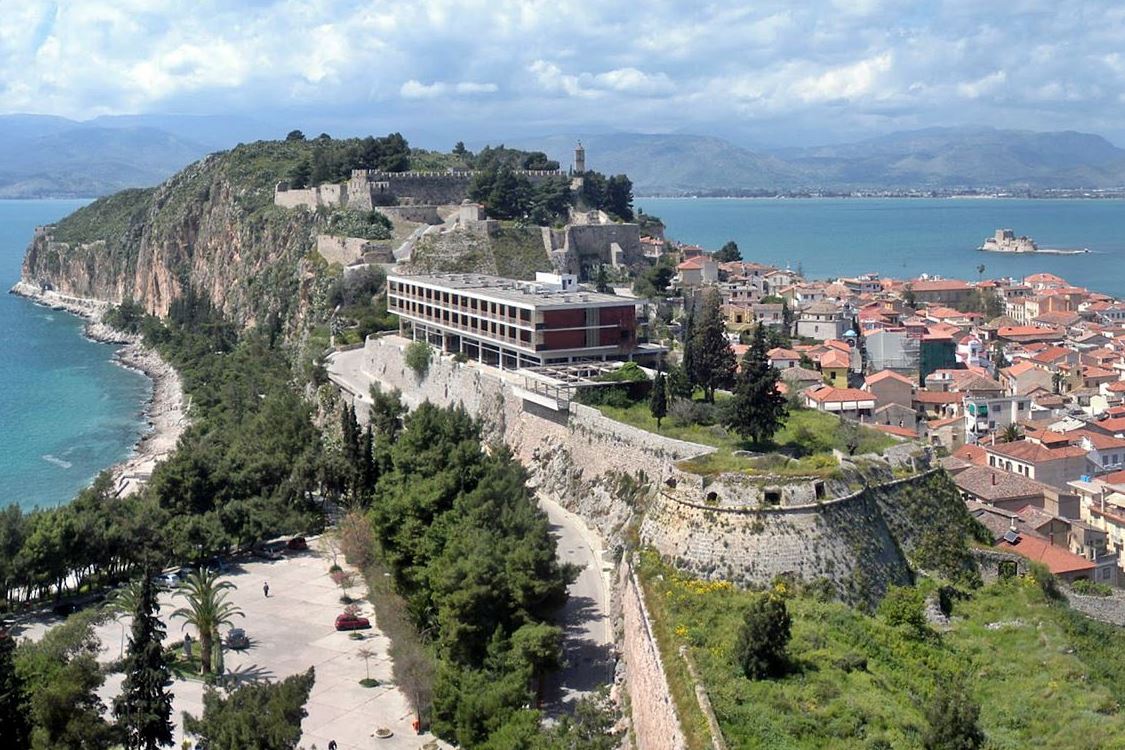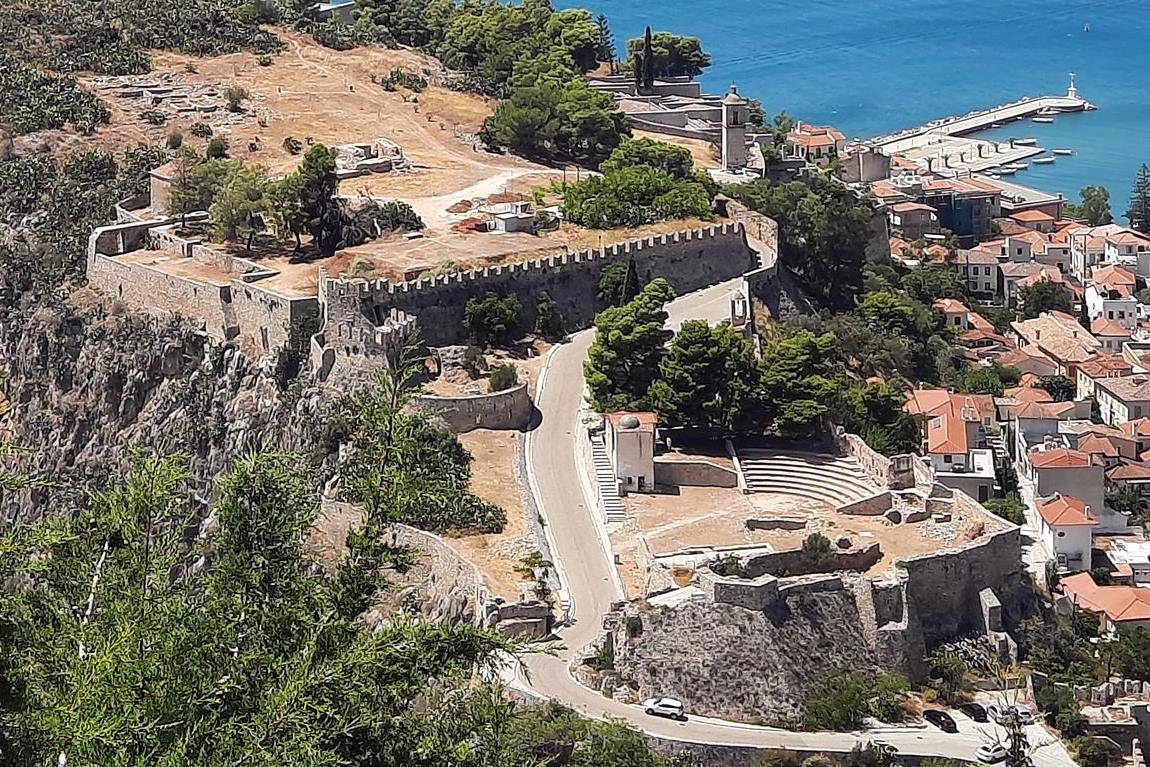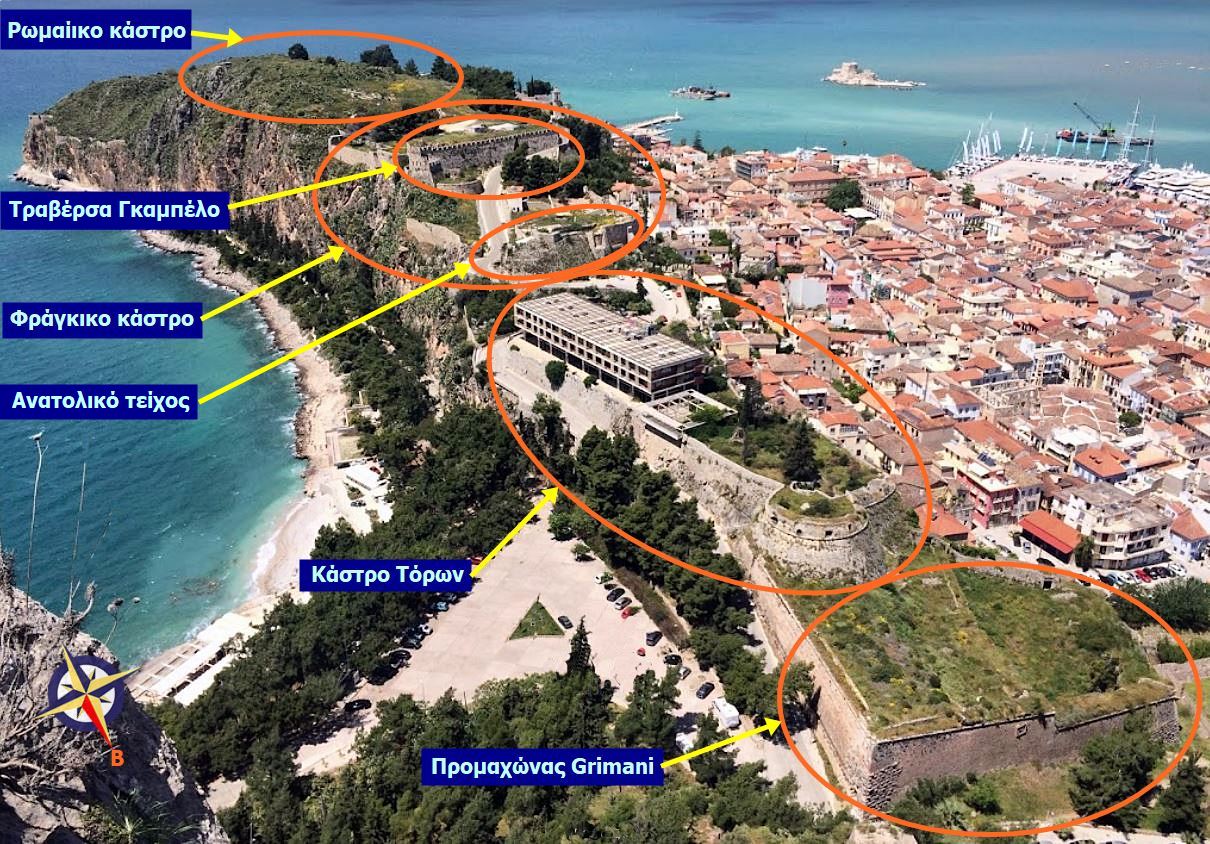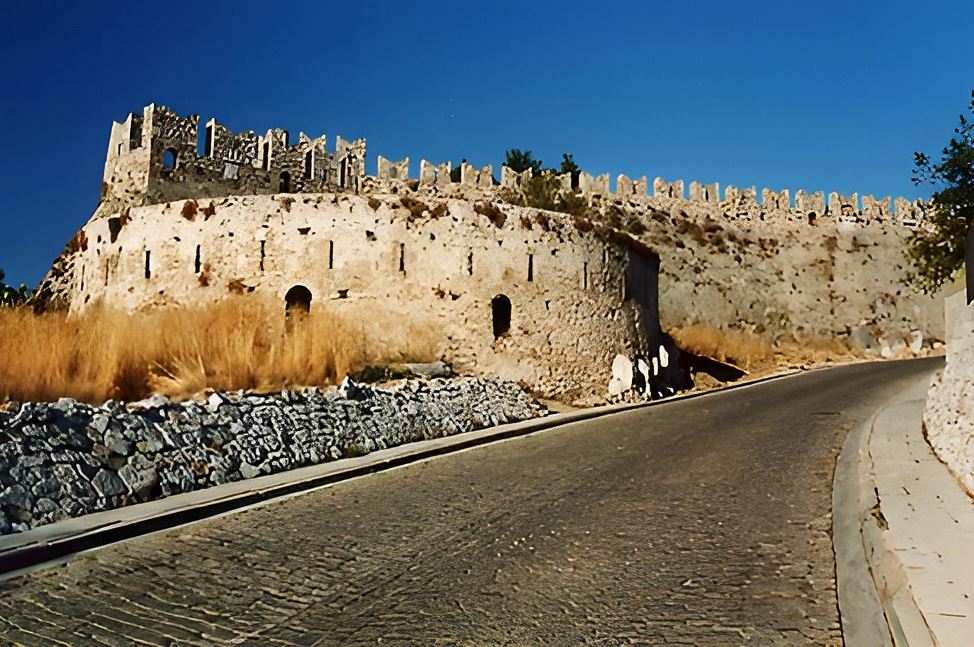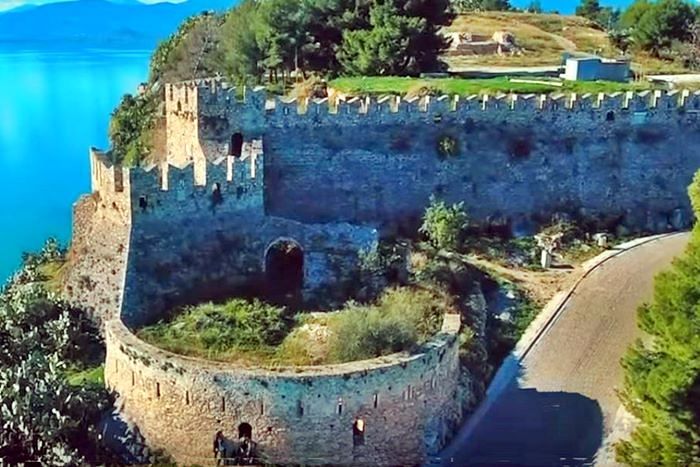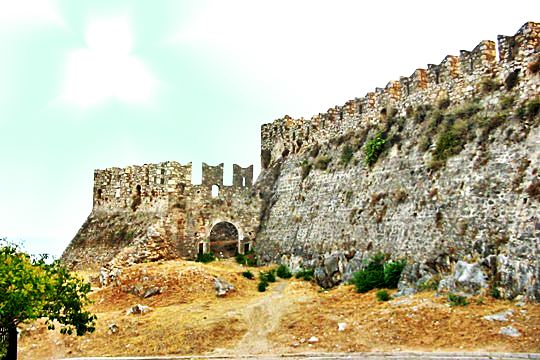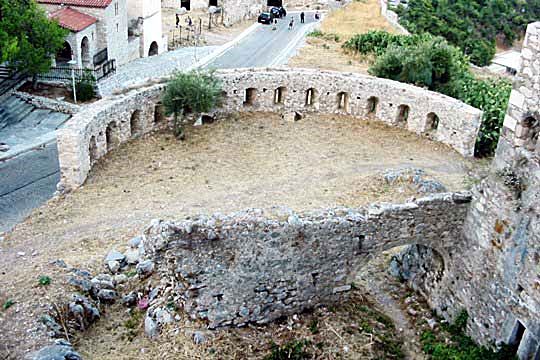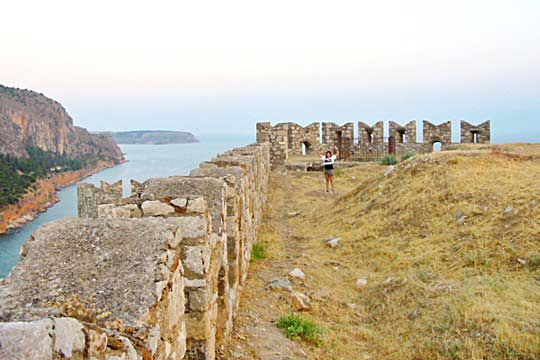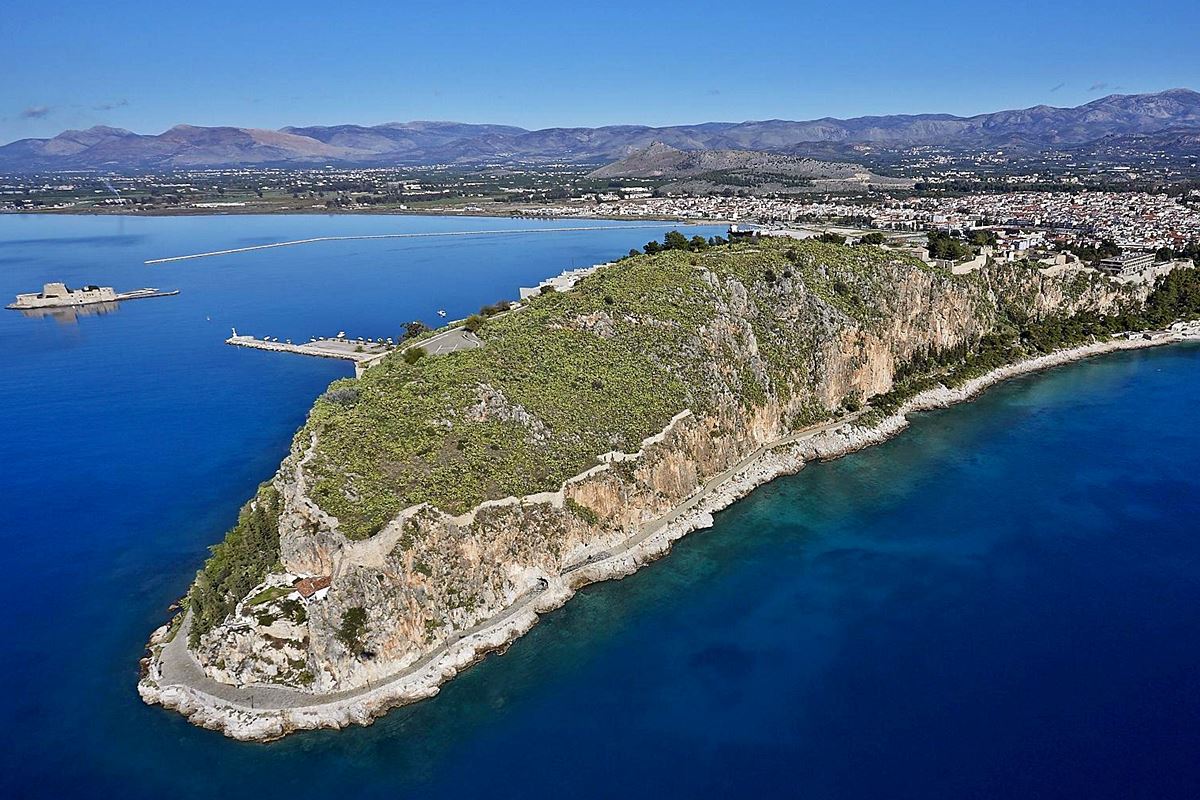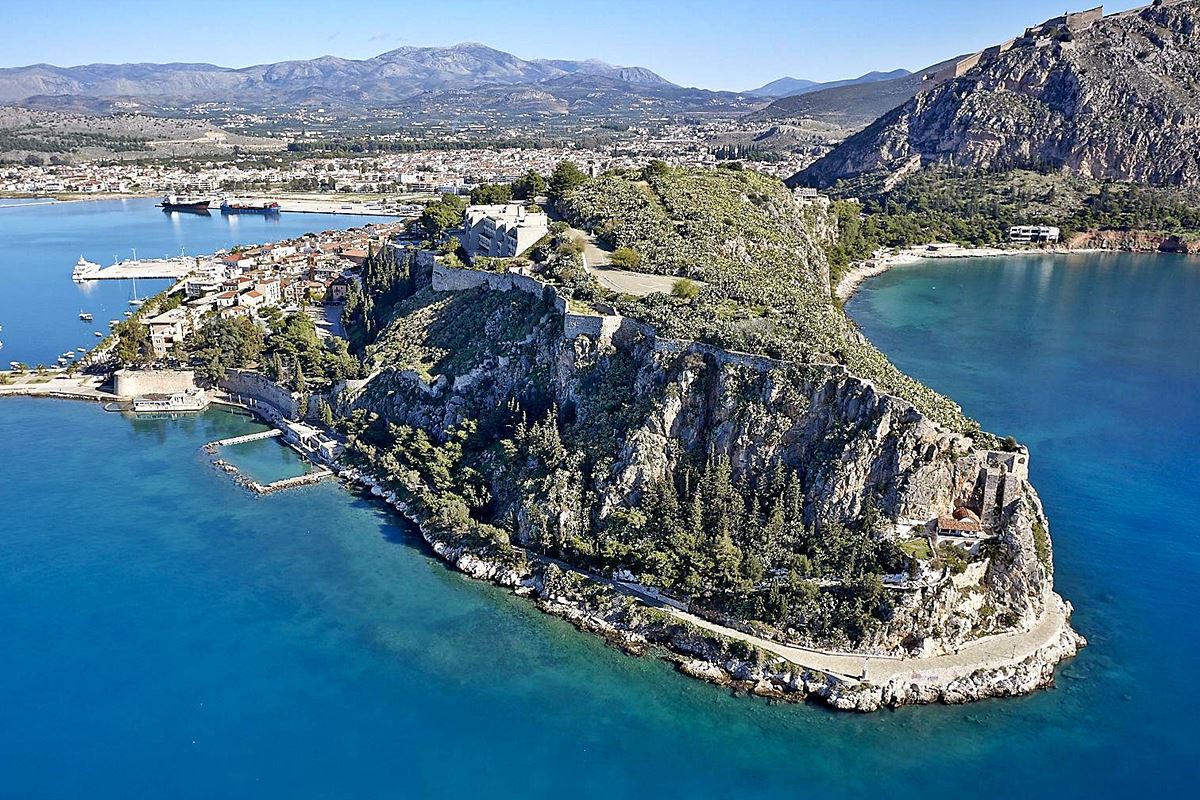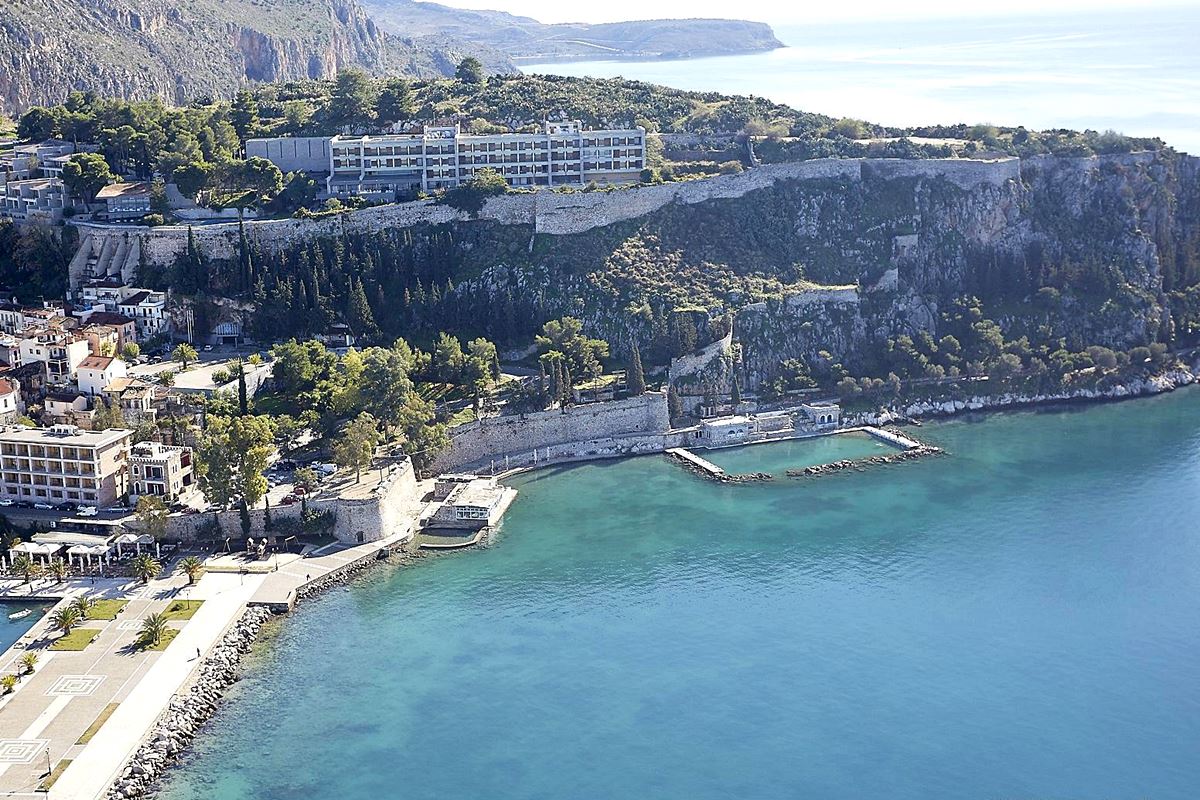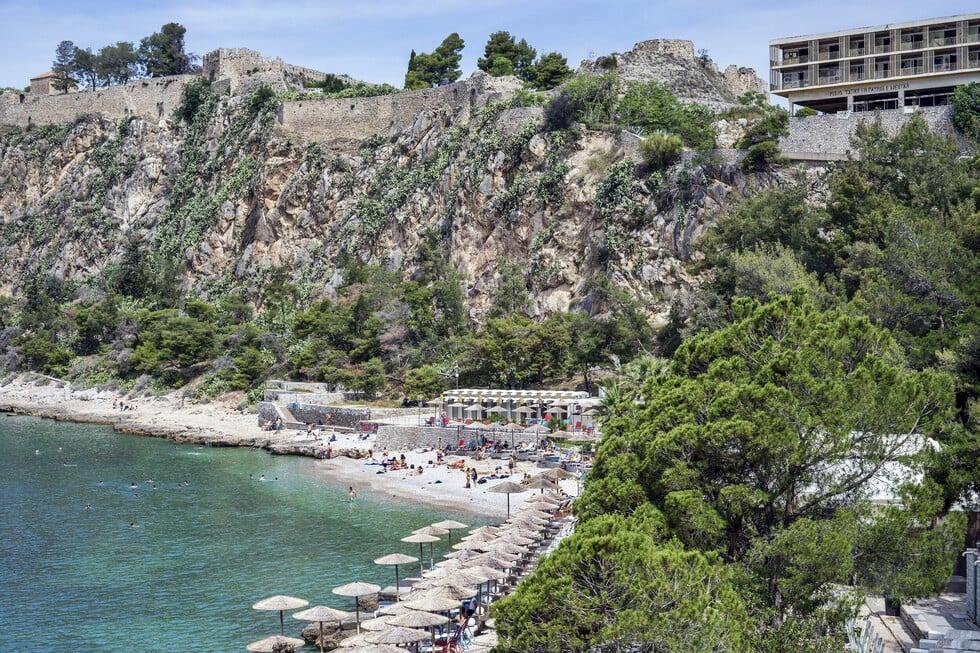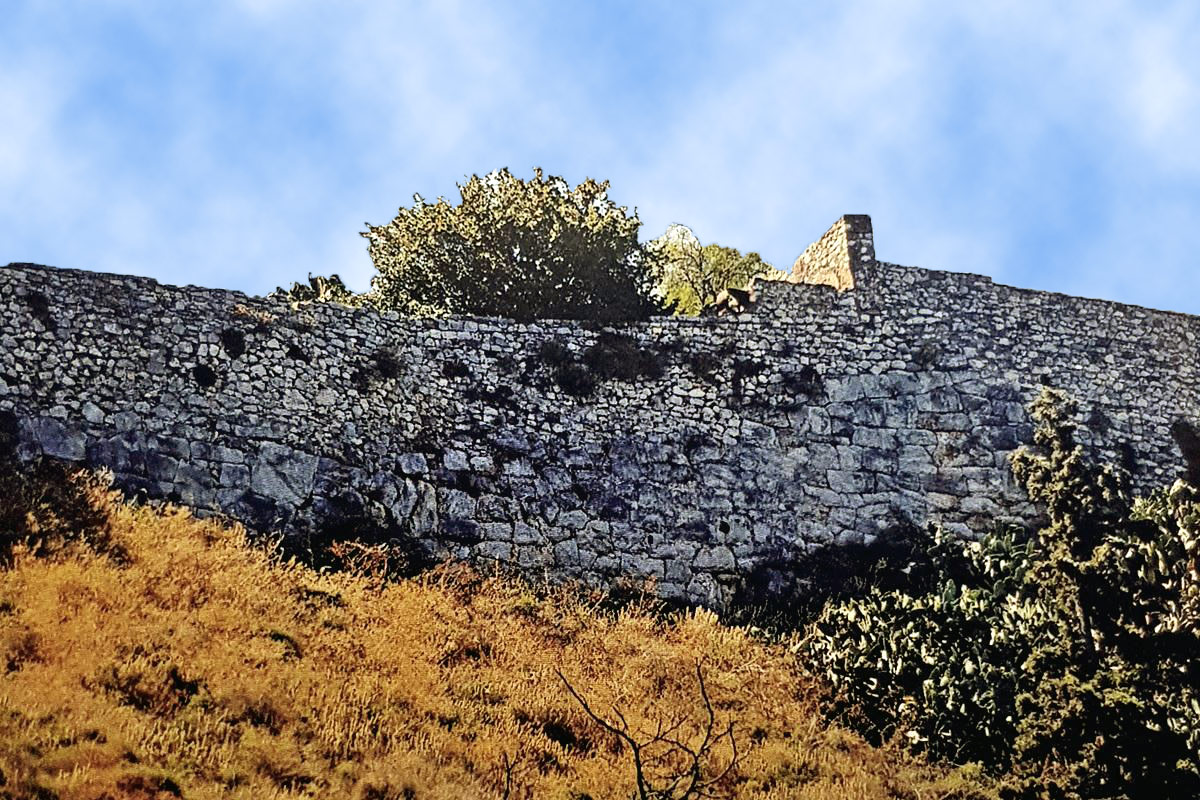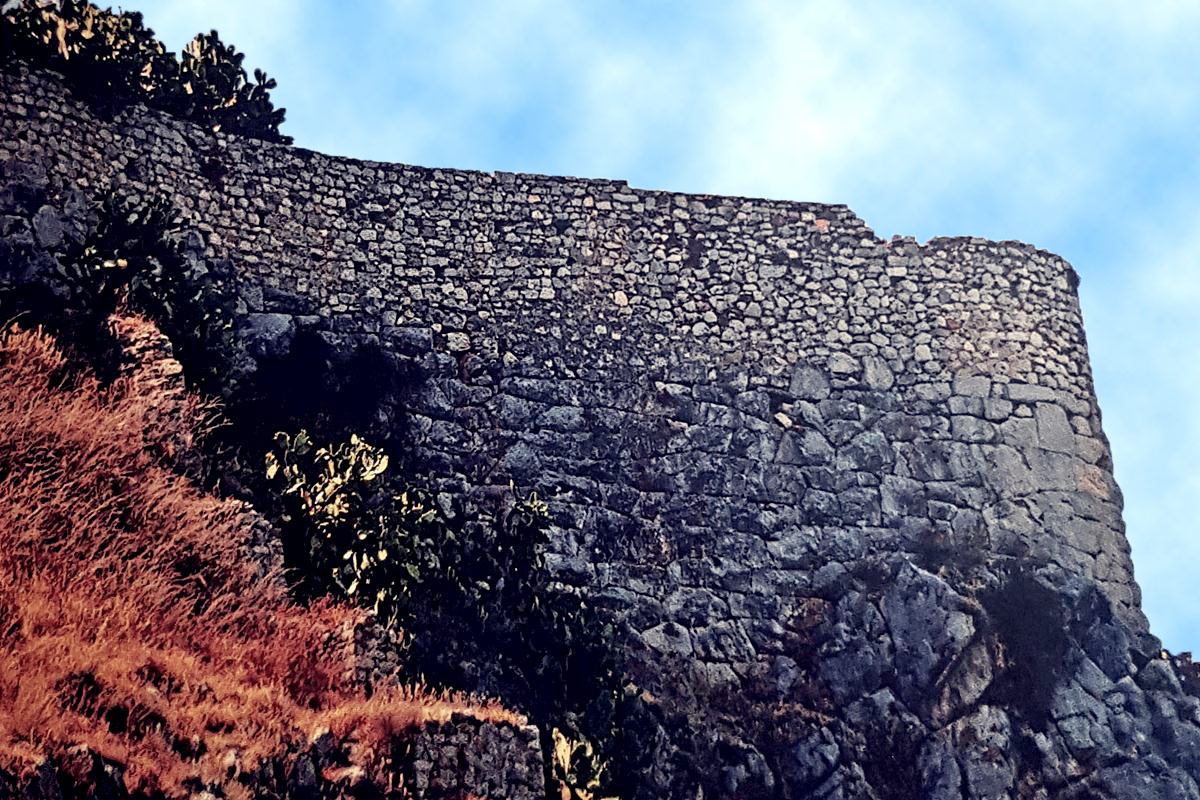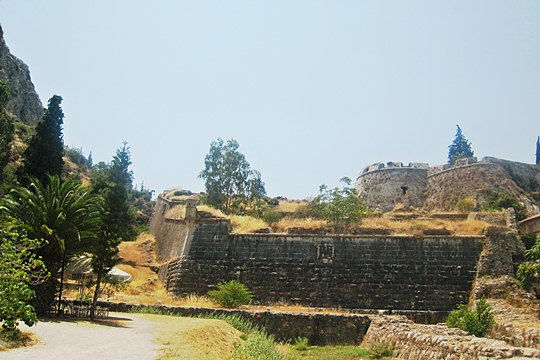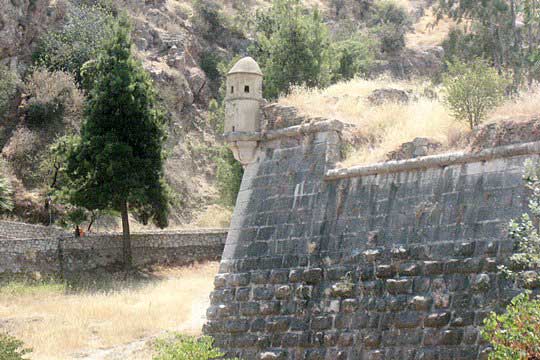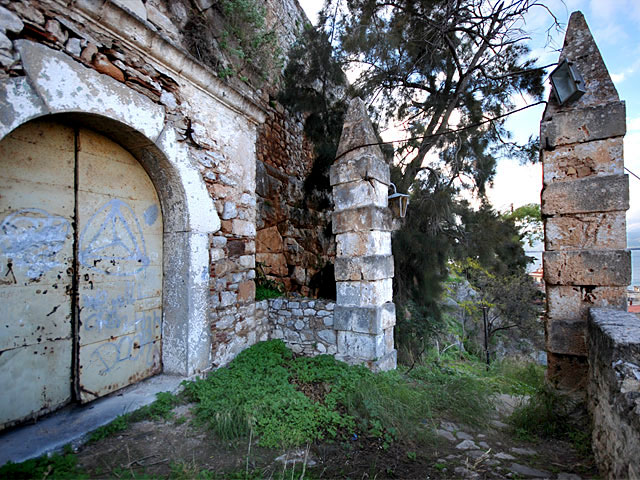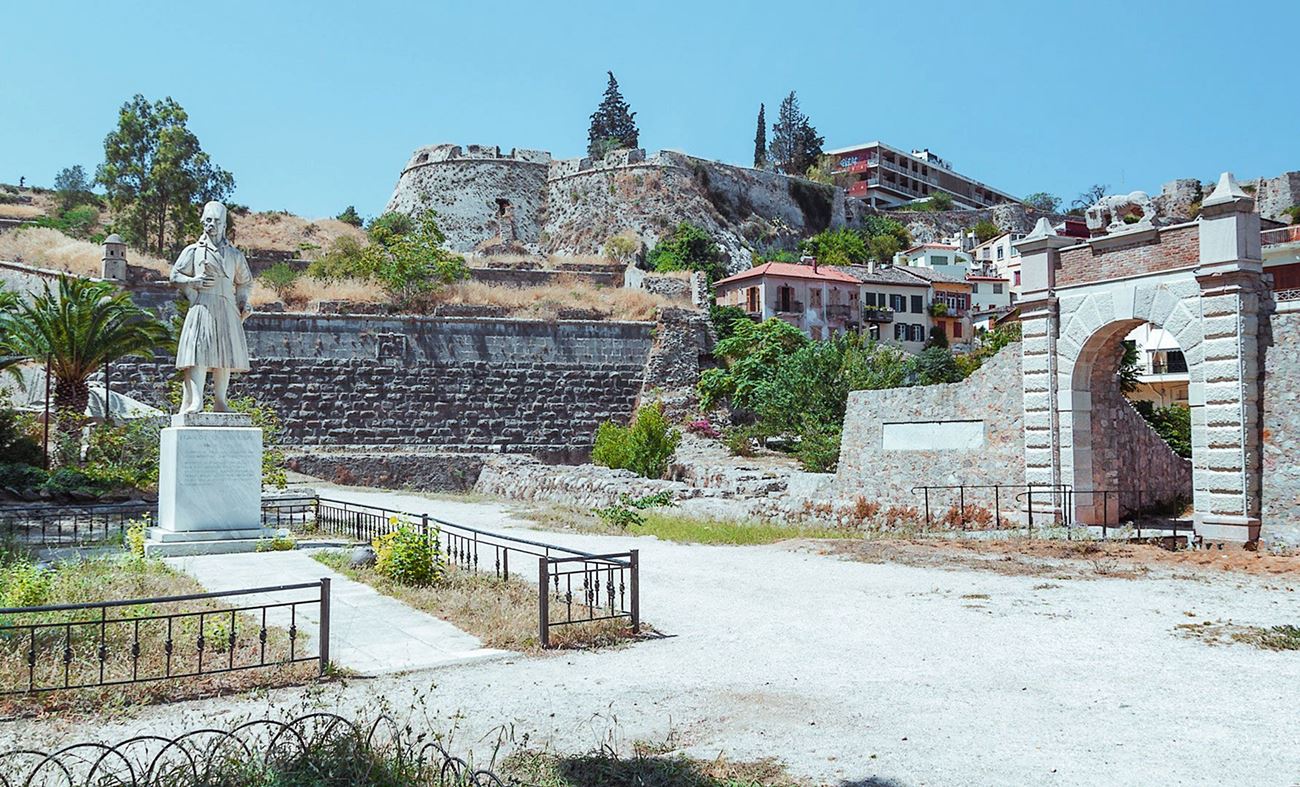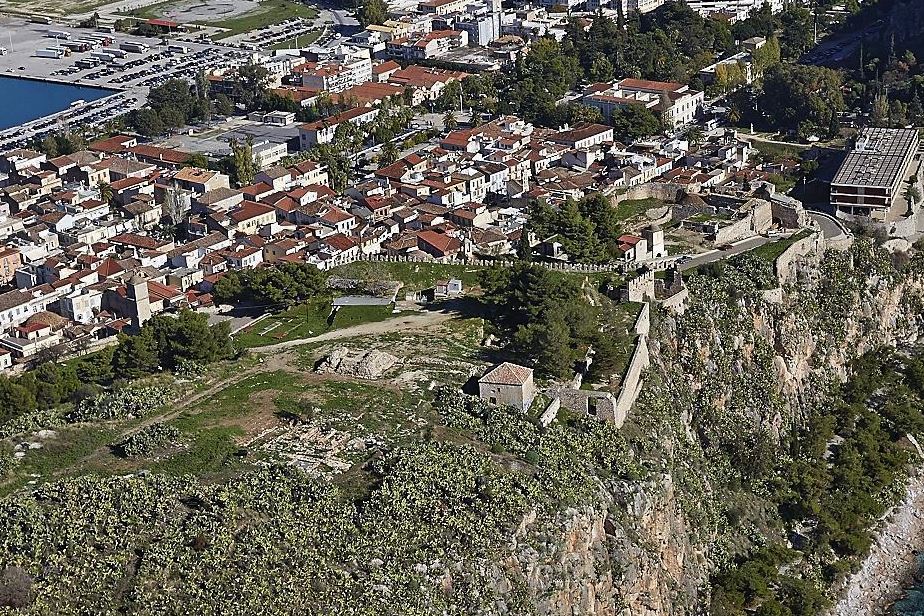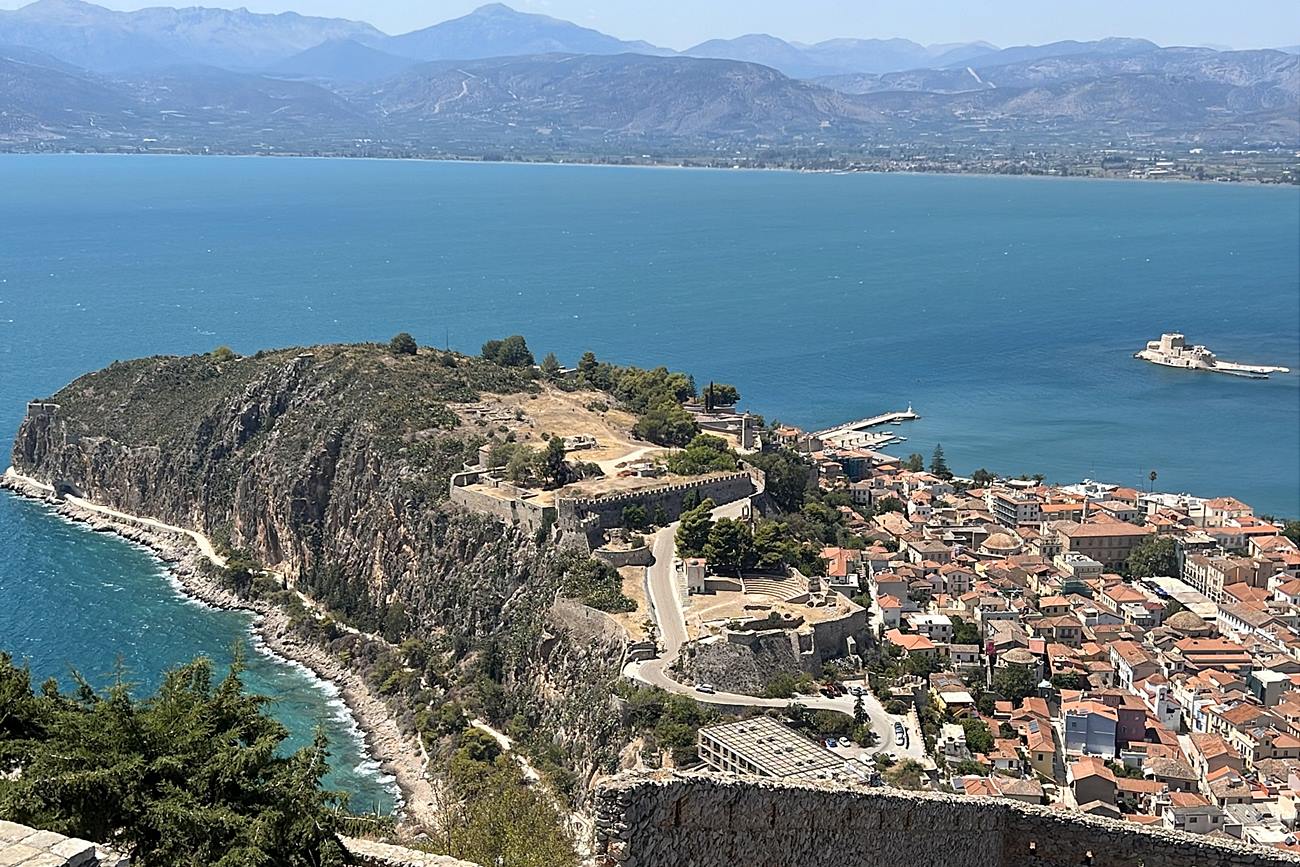Nafplio, Nafplion, Argolis,Peloponnese
Akronafplia
| Location: |
| Nafplion, Peloponnese |
| Region > Prefecture: | 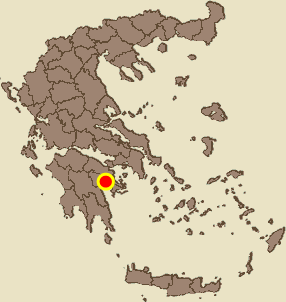 |
| Peloponnese Argolis | |
| Municipality > Town: | |
| City of Nafplion • Nafplio | |
| Altitude: | |
| Elevation ≈ 80 m |
| Time of Construction | Origin | |
| Various periods | VENETIAN |
|
| Castle Type | Condition | |
| Fortress-state |
Average
|
Akronafplia is one of the three outstanding castles of Nafplio, and the one with the richest history. The current form of the castle of Akronaflia, although quite altered by modern interventions, was formed mainly during the Frankish and First Venetian periods, from the 13th to the 16th century.
Rising above the old part of town, the Akronafplia fortress is the oldest of Nafplio's three castles. The lower sections of the walls date back to the Bronze Age. Until the arrival of the Venetians, the town was restricted to within its walls.
Location & Strategic Scope
The castle is on the rocky penisula of Akronafplia which has been the walled town of Naflion from the classical period until the late 15th century. Nafplion later expanded outside the rock, closer to the sea.
History
A settlement in Akronaflia existed from the Bronze Age and the Mycenaean period, while during classical antiquity it was just the port of Argos. A first fortification was created in the 4th century BC. For the ancients, the settlement was called Nafplia and it occupied the upper part of the rocky peninsula, the part that today is named Akronafplia.
During the Roman and Early Byzantine periods, Nafplion was a rather insignificant settlement, but in the 11th and 12th centuries it appears seriously upgraded, especially during the period it was ruled by the local semi-independent lords Theodoros Sgouros (starting 1180) and later his son Leon Sgouros (1200-1210).
The Franks occupied Naflio in 1210. Since 1212 it belonged to the Duchy of Athens. The Franks separated the old Byzantine castle in two parts: at the center of the peninsula was the “Frankish castle” and to its west, higher, the “Castle of the Greeks” (photo 3).
In 1389 Nafplion came under the possession of the Venetians and then the period of the First Venetian rule began. The Venetians significantly strengthened the fortifications after 1470. Among others, they built a new castle on the rock, the Castel di Tori (with an impressive bastion) east and lower of the Frankish castle. They also built the so called Gambello traversa to reinforce the middle of the Frankish castle.
After 1480 they founded the Lower Town (the present-day Nafplion) by back-filling the northern seashore and fortified it with new towers and sea walls. Soon the settlement on the rocks of Akronafplia was depopulated and the authorities moved to the new city by the sea.
In 1540 the Venetians were forced to surrender the city to the Ottomans. The Turks did not make any major changes in the fortifications except a bastion at the northwestern tip of the peninsula, which was named “the five brothers” because of its 5 canons.
The Venetians returned in 1686 for a second period of Venetian rule, when Nafplio became the capital of the Regno di Morea. Within 30 years they fundamentally changed the shape of the city and its fortifications by building new large bastions and the fortress of Palamidi above the city.
In 1715 the Turks captured Nafplio again and held it until it was liberated by the Greeks in 1822.
Nafplio became the capital of the new Greek state (until 1834).
In the 19th century many medieval building and fortifications on the rocks of Akronafplia were destroyed and gave their place to military camps and a military hospital. In 1867, the Venetian sea walls were demolished and in 1895 the eastern fortification, protecting the access from land, were also destroyed. In 1926 a prison was founded in the location of the old castle of the Greeks. It was one of the most notorious prisons in Greece and remained in operation until the mid 1960s. In 1929 the two seaside imposing bastions of Dolfin and Mocenigo were flattened to make space for public buildings.
In 1961 a Xenia hotel was built in the interior of the Castel di Tori and in 1971 a second, bigger hotel was built where the prison was and, earlier, the Castel di Greci.
Structure, Fortification & Buildings
Akronafplia was one of the most important castles in Greece with many impressive fortifications built in various periods. Today, however, much of it has been destroyed. In Akronafplia today we see the following fortifications:
• The walls on the west and south side of the Akronafplia rock (photos 10-14). These walls have existed since the Byzantine period with several later additions. In some places, on the western side, the ancient wall on which the medieval ones rested can be seen in the lower part (photos 15, 16).
• The Frankish Castle of the 13th century in the center of Akronafplia (photo 2). The “Gambello traversa” (photos 4-9) and, a little lower, the so-called “Eastern Wall” of the Byzantine and Frankish castle belong to the same complex. On the western side of the castle, you can see the foundations of the square tower that protected the wall that separated the Frankish from the Greek castle (photo 29).
• The castle of Tori, of the 15th century, which is largely covered by the abandoned Xenia hotel. However, part of its wall is preserved as well as the imposing bastion at its southeastern end (photos 1, 3, 24).
• The Grimani bastion (photos 3, 18-20) of the early 18th century at the south-eastern end of the peninsula, below Palamidi, as a continuation of the fortification of the castle of Toros.
• The Five Brothers bastion (16th-17th century) on the north-western seaside side of Akronafplia which is preserved intact and in good condition together with its cannons (photo 28).
• Of the gates, the following are preserved: the gate of the Frankish castle (photos 7, 27), the restored Venetian land gate on the eastern side (photos 25, 26), the Gate of Peace on the Byzantine East Wall, the gate of Sagredo (photos 21, 22), the two gates to the castle of Tori (photos 23 and 24).
Access to Akronafplia is from the old town of Nafplion via an asphalt road that follows the route of the old moat around the Grimani bastion.
Legends & Tales
Once past the moat, there were two gates into Acronauplia. They were both constructed of iron, but the second one was fashioned like a trap-door, lowered from the ceiling. This second door was decorated with an Arabian sword which belonged to the first janissary to cross the gate when the Turks captured the city in 1715. Legend has it that the sword dripped blood every Friday to commemorate the city's capture on a Friday.
| First entry in Kastrologos: | July 2012 | Last update of info and text: | September 2023 | Last addition of photo/video: | September 2023 |
Sources
- Μιχαήλ Γ. Λαμπρυνίδης, Η Ναυπλία από των αρχαιοτάτων χρόνων μέχρι των καθ’ ημάς, 1898
- Δημήτριος Περσέας Λουκίσσας, «ΑΡΓΟΛΙΔΑΣ-ΚΟΡΙΝΘΙΑΣ ΠΕΡΙΗΓΗΣΙΣ - Ένα σύγχρονο οδοιπορικό στη γη των Μύθων και της Ιστορίας», Τόμος Β’, Ανοιχτή Πόλη, Αθήνα 2022, σελ. 49-114 – πηγή φωτογραφιών 6,13,15,16,17,20,21,23,24,25,27,28 (2021)
- Antoine Bon, Le Péloponnèse byzantine jusqu’en 1204, Paris 1951, pp. 83, 100-101, 114, 165, 173
- Kevin Andrews, Castles of the Morea, Princeton, New Jersey 1953 , pp. 90-105
- G. Gerola, Le fortificazioni di Napoli di Romanὶa, Annuario della Regia Scuola Archeologica di Atene e delle Missioni Italiane in Oriente 13-14 (1930-1931) pp. 347-410
- Ευαγγελία Δεϊδάκη, Αρχαιολογικόν Δελτίον, τεύχος 28/Β1 (1973) σελ. 80-93
- Ιωάννα Στεριώτου, Οι Οχυρώσεις του Ναυπλίου: Διαχρονικός οδηγός για την ανάπτυξη του συστήματος των προμαχώνων (15ος-18ος αι.), ΝΑΥΠΛΙΑΚΑ ΑΝΑΛΕΚΤΑ ΙΧ, Ναύπλιο, 2017 σελ. 289-312
- Αλέξης Μαλλιάρης, Η πόλη του Ναυπλίου κατά τη δεύτερη Βενετική περίοδο (1686-1715), ΝΑΥΠΛΙΑΚΑ ΑΝΑΛΕΚΤΑ ΙΧ, Ναύπλιο, 2017 σελ. 257-267
- Ιστοσελίδα Δήμος Ναυπλιέων
- Ειρήνη Δ.Οικονοµοπούλου, Πρόταση αποκατάστασης και ανάδειξης του ανατολικού μέρους του Φράγκικου κάστρου της Ακροναυπλίας, Διπλωματική εργασία στο ΕΜΠ, σχολή Αρχιτεκτόνων, στο Διατμηματικό Πρόγραμμα Μεταπτυχιακών Σπουδών Εξειδίκευσης «Προστασία Μνηµείων _ Α΄ Κατεύθυνση: Συντήρηση και Αποκατάσταση Ιστορικών Κτηρίων & Συνόλων, κατά το ακαδηµαϊκό έτος 2008–2009, Αθήνα, 2009
- Photos 2, 3, 30 by Ismini Papathanasiou (August 2023)
|
|
| Access |
|---|
| Approach to the monument: |
| Ascension to the castle from various points in the city of Nafplio. Accessible by car, staircase and even an elevator! |
| Entrance: |
| Easily accessible from Nafplio with many points of entrance. |
| Timeline |
|---|
|



